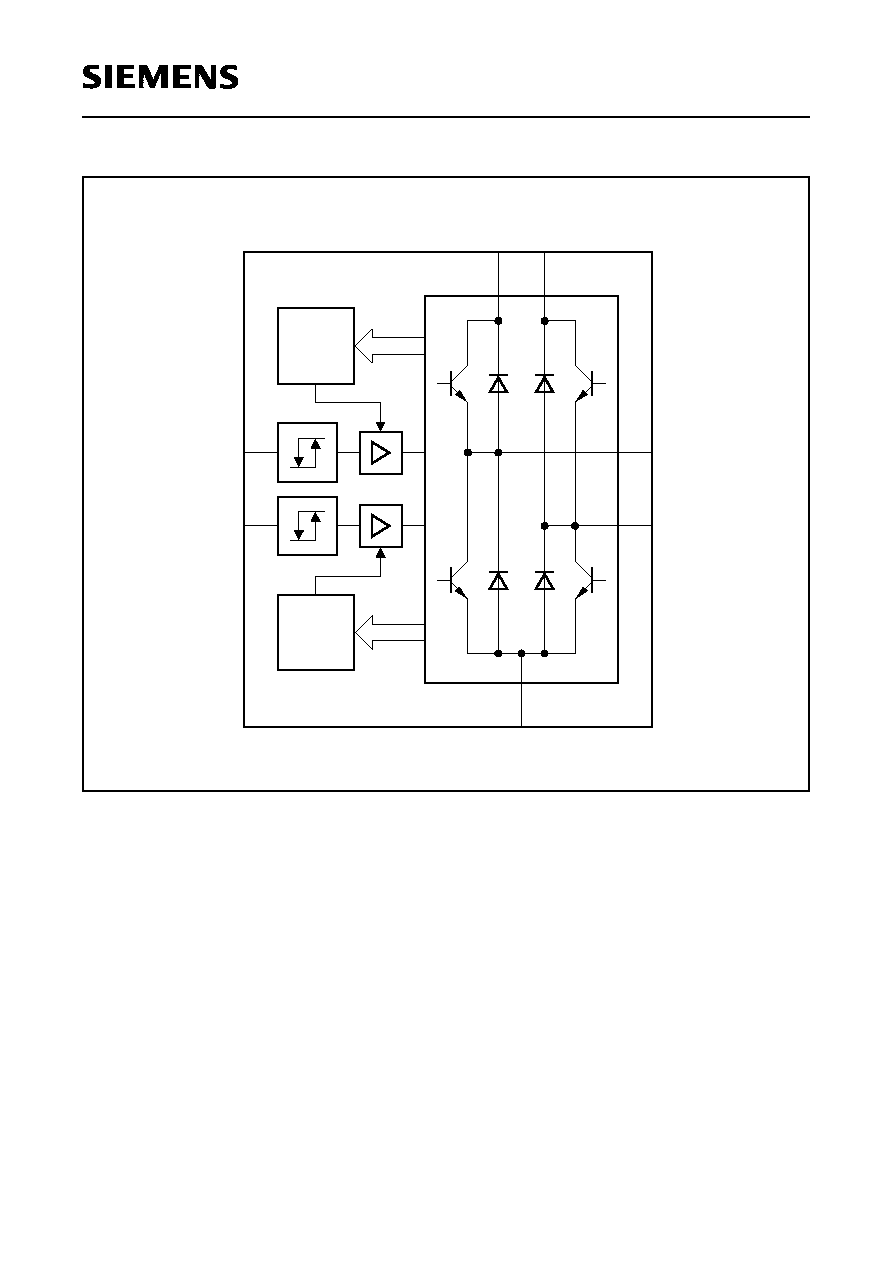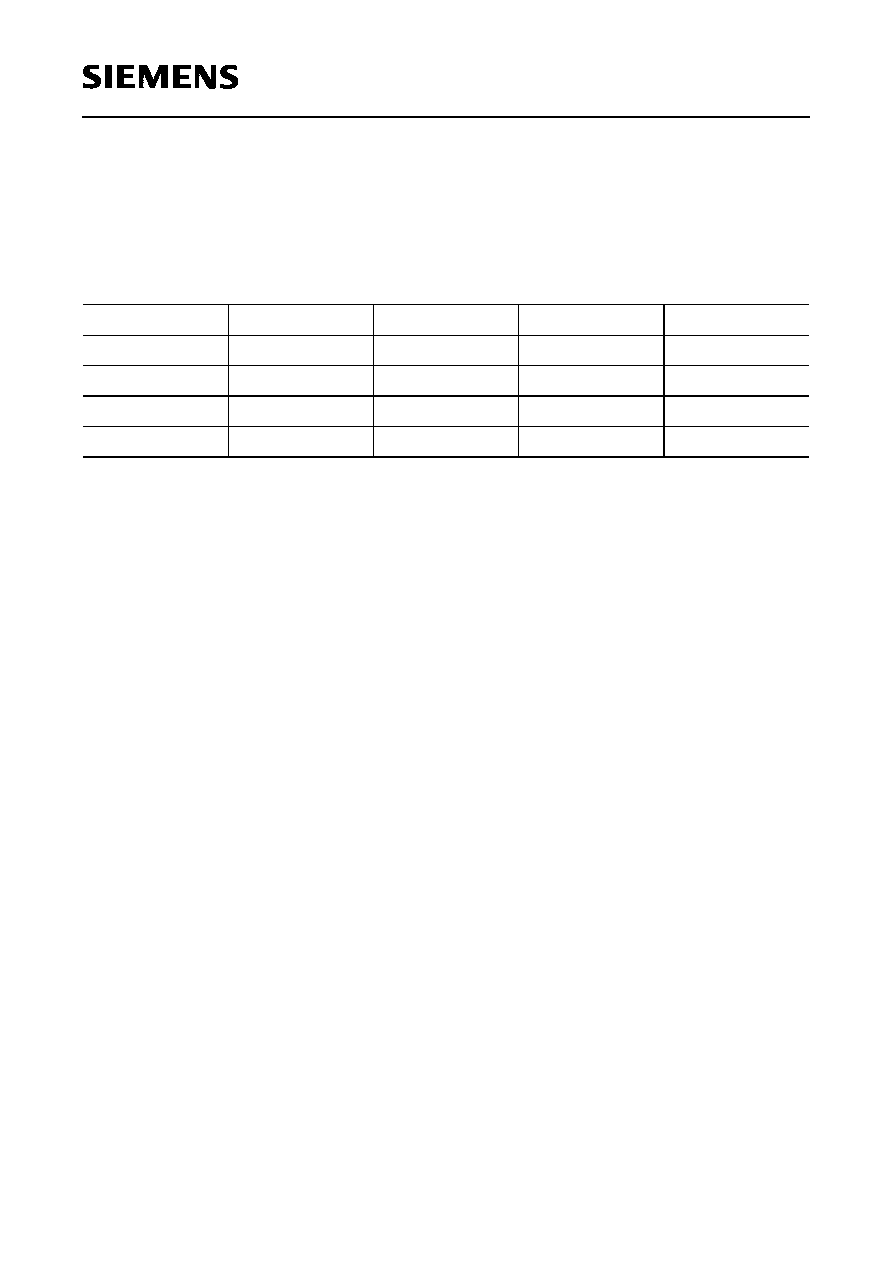
Semiconductor Group
1
1998-02-01
Description
The integrated circuit TLE 4203 is a versatile double power driver of up to 4 A output
current which is particularly suitable as a driver for DC motors in reversible operation.
The push-pull power output stages operate in the switching mode and can be combined
to a full-bridge configuration.
The drive of the input stage is implemented using digital logic.
The device contains a temperature protection logic, output stages protected against
short-circuit and integrated free-wheeling diodes.
Typical applications are for follow-up control, servo drives, servo motors, drive
mechanisms, etc.
Type
Ordering Code
Package
TLE 4203
Q67000-A8121
P-TO220-7-1
TLE 4203 S
Q67000-A9101
P-TO220-7-2
4-A DC Motor Driver
Overview
Bipolar IC
TLE 4203
P-TO220-7-1
P-TO220-7-2
Features
� Integrated free-wheeling diodes
� Outputs short-circuit proof to
V
S
and ground
� Thermal overload protection
� Blocking of the output stages upon undervoltage
� Final push-pull stage free of cross-over

TLE 4203
Semiconductor Group
2
1998-02-01
.
Figure 1
Pin Configuration (top view)
Pin Definition and Functions
Pin No.
Symbol
Function
1
IST1
Control input for channel 1 (TTL/CMOS-compatible), of
non-inverting effect on the channel output.
2
V
S1
Channel 1 supply voltage; externally connected with the
supply voltage pin for channel 2 (pin 6).
3
Q1
Short-circuit protected push-pull C output channel 1 for
currents up to 6 A. Free-wheeling diodes are integrated on
chip for inductive loads.
4
GND 1, 2
Ground; track should be designed for the max. short-circuit
current (2 x 6 A).
5
Q2
Short-circuit protected push-pull C output channel 2 for
currents up to 6 A. Free-wheeling diodes are integrated on
chip for inductive loads.
6
V
S2
Channel 2 supply voltage; externally connected with the
supply voltage pin for channel 1 (pin 2).
7
IST2
Control input for channel 2 (TTL/CMOS-compatible), of
non-inverting effect on the channel output.
AEP00618
IST1
Q1
Q2
IST2
GND
V
S1
S2
V
4
3
2
1
5
6
7

TLE 4203
Semiconductor Group
3
1998-02-01
Figure 2
Block Diagram
AEB00628
Protection
Circuit 1
Protection
Circuit 2
3
5
Output 2
Output 1
GND
Supply Voltage
V
S
1
7
Control
Input 1
Input 2
Control
6
4
2

TLE 4203
Semiconductor Group
4
1998-02-01
Application
In industrial and automotive electronics, power full-bridge DC motor drivers are mostly
used for bidirectional motor drives. The two TTL and CMOS-compatible control inputs
act on the output as follows:
V
QL
means: Lower power unit conducting; upper power unit blocked.
V
QH
means: Upper power unit conducting; lower power unit blocked.
The following examples illustrate the operation:
Status 1: Motor is slowed down
Status 2: Motor turns right
Status 3: Motor turns left
Status 4: Motor is slowed down
Status
Input 1
Input 2
Output 1
Output 2
1
L
L
V
QL
V
QL
2
L
H
V
QL
V
QH
3
H
L
V
QH
V
QL
4
H
H
V
QH
V
QH

TLE 4203
Semiconductor Group
5
1998-02-01
Circuit Description
Input Circuit
The control inputs consist of TTL and CMOS-compatible Schmitt triggers with hysteresis.
Buffer amplifiers, controlled from these stages, convert the logic signal into the form
required for driving the power output stages.
Output Stages
The output stages consist of two push-pull C stages. Using protective circuits for limiting
the power dissipation makes the outputs short-circuit proof to ground and to supply
voltage throughout the entire operating range. Positive and negative voltage peaks,
which occur when switching inductive loads, are limited by integrated power diodes.
Monitoring and Protecting Functions
The IC is protected against thermal overloads by a temperature protecting circuit.
In addition an internal circuit ensures that all output transistors are blocked for supply
voltages below operating range.
A monitoring stage logic for each output stage transistor detects whether the relevant
transistor is active and in this case for sink operation (source operation) prevents the
corresponding source transistor (sink transistor) from being turned on. Direct cross-over
currents are effectively prevented with this method.




